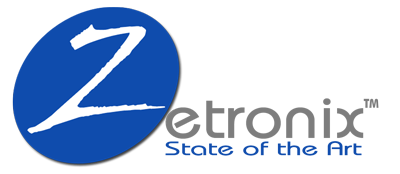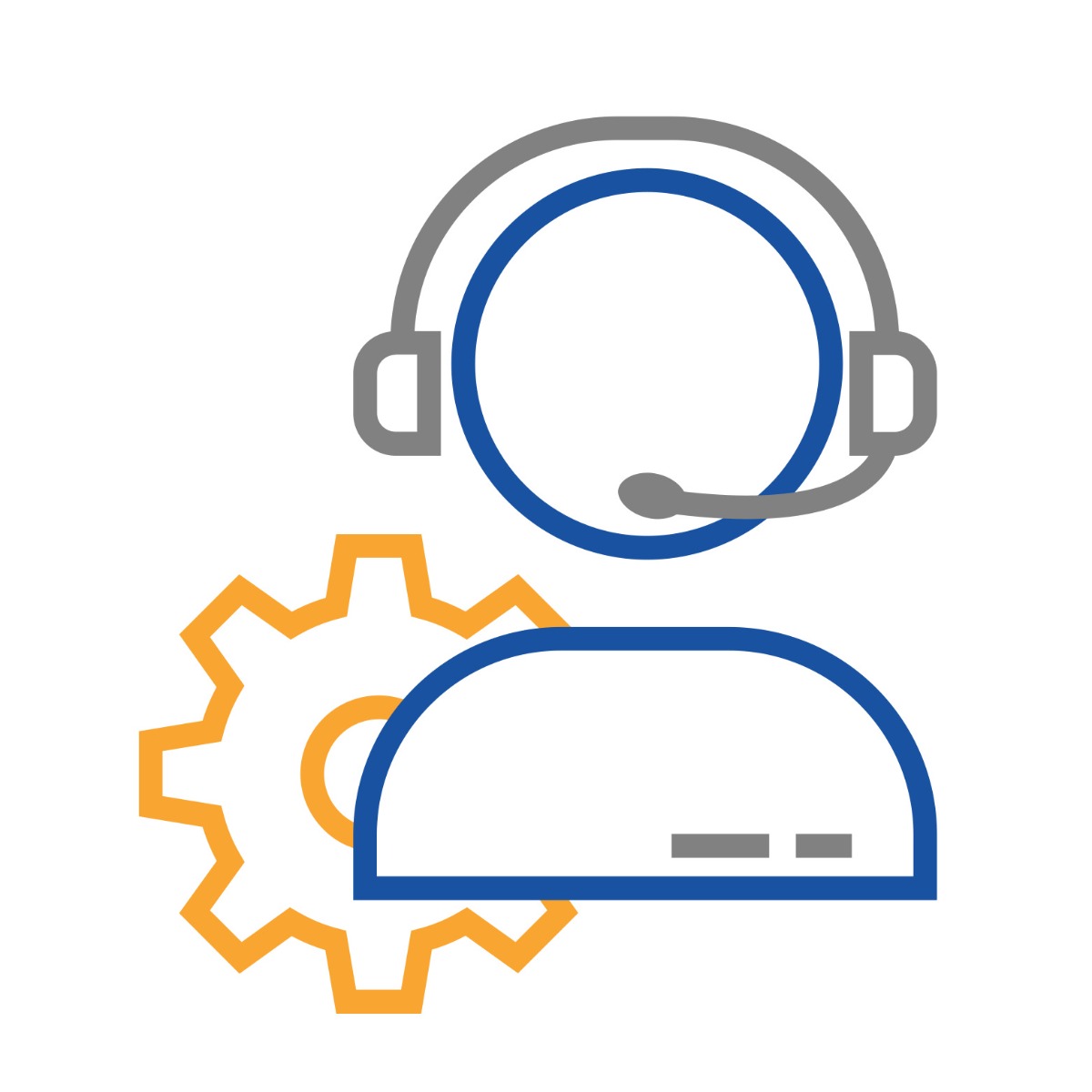A 7-Step Useful Guide on How to Find Hidden Cameras
In our increasingly connected world, the line between privacy and public space blurs, raising alarm over personal security. The advent of miniature, sophisticated technology has made hidden cameras a pressing concern for many, covertly infringing on our moments of solitude and vulnerability.
This guide delves into seven crucial strategies designed to empower individuals with the knowledge and tools necessary to uncover these intrusive devices. Whether you're staying in a hotel, using a public changing room, or renting a property, understanding how to find hidden cameras is vital for protecting your privacy.
By following these expertly curated steps, you'll not only enhance your awareness but also reinforce your personal sanctuary against unwanted surveillance, ensuring peace of mind in the digital era.
Importance of Personal Safety in Technologized Age
In today's digitized world, the proliferation of hidden cameras has emerged as a stark reminder of the vulnerabilities accompanying technological advancement. The very tools designed to enhance our lives can also intrude upon our most private moments.
Falling prey to hidden cameras not only breaches our privacy but also leaves a lasting impact on our sense of security and well-being. This invasion of personal spaces without consent is a profound violation, highlighting the critical importance of vigilance in protecting ourselves. It necessitates a heightened awareness and understanding of the environments we inhabit, urging us to employ both caution and technology to safeguard our personal privacy.
In an age where surveillance devices can be concealed within the mundane, ensuring our personal safety demands constant attention and proactive measures.
Common Types of Cameras
Understanding the common types of hidden cameras can significantly improve your ability to identify and protect against covert surveillance. Below, we explore some of these devices' most prevalent forms, highlighting their disguises and functionalities.
Smoke Detector Cameras
- Disguised as standard smoke detectors, these cameras blend seamlessly into residential or commercial settings.
- Often installed on ceilings, they provide a broad view of the room, making them ideal for monitoring large areas.
- They may not function as actual smoke detectors, so checking for dual functionality can be a clue.
Clock Radio Cameras
- These are hidden within fully functional clock radios.
- Perfect for bedrooms, living rooms, or hotels, they often feature night vision capabilities to record in low light conditions.
- Their common presence in various settings allows them to record without arousing suspicion.
Picture Frame Cameras
- Camouflaged within picture frames, these cameras can be placed in plain sight on shelves or desks.
- They typically target specific areas, making them suitable for capturing face images or specific interactions.
- Variants may include digital photo frames with built-in surveillance technology.
Electrical Outlet Cameras
- Designed to mimic the appearance of power outlets, these devices are often overlooked.
- Positioned at lower heights, they are perfect for capturing footage in areas like offices, kitchens, or hallways.
- Since they blend into the wall, detecting their lens or abnormal positioning is key to identification.
USB Charger Cameras
- Hidden within functional USB chargers, these cameras add a layer of deceit by serving a dual purpose.
- Commonly found in various rooms, they can record continuously while plugged in, offering an uninterrupted power supply.
- Inspecting for unusual designs or additional lens openings can help uncover these devices.
Pen Cameras
- Disguised as ordinary pens, these are highly portable and can be left in plain view on a desk or carried.
- Ideal for capturing documents, meetings, or personal interactions up close.
- The pen's functionality as a writing instrument often diverts attention away from its surveillance capabilities.
Air Freshener Cameras
- Concealed within air freshener containers, these cameras can be strategically placed in bathrooms, bedrooms, or offices.
- They emit a fragrance, further masking their true purpose and integrating seamlessly into their environment.
- Observing non-standard designs or additional components can aid in their detection.
Wi-Fi Router Cameras
- Embedded within devices that look like standard Wi-Fi routers, these cameras leverage their expected presence in homes and offices.
- Capable of blending in with genuine networking equipment, they often go unnoticed.
- They may provide live streaming capabilities, utilizing the guise of network devices to avoid detection.
Alarm Clock Cameras
- These hidden cams are housed in fully functional alarm clocks, making them commonplace in bedrooms and hotel rooms.
- Their positioning often offers an unobstructed view of the room, ideal for continuous monitoring.
- Examining the clock for irregularities in design or additional lens apertures can be revealing.
Understand Common Hidden Camera Locations
Awareness of the most likely places for hidden cameras to be installed is crucial in safeguarding your privacy. These devices are not randomly placed; instead, they're strategically located where they can capture the most information. Here’s a deeper look into common locations:
Bedrooms and Living Rooms
These personal spaces are prime targets for hidden cameras, especially in lodging environments like hotels and vacation rentals.
- Key objects to scrutinize: Alarm clocks, smoke detectors, picture frames, or any electronic devices that seem redundant or oddly placed.
Bathrooms
Given the private nature of bathrooms, finding a hidden camera here is particularly alarming.
- Potential hiding spots: Light fixtures, showerheads, air fresheners, or decorative items placed unusually high or facing the shower area.
Changing Rooms
Retailers and gyms are locations where changing rooms might be targeted for camera placement.
- Areas of concern: Hooks, mirrors (look for two-way mirrors by conducting the fingertip test), and ceiling tiles or vents.
Hotels and Vacation Rentals
With the rise of temporary lodging options, the risk of encountering hidden cameras has increased.
- Objects of suspicion: TVs, remote controls, electrical outlets, or decorative items that directly face the bed or living area.
Use Your Eyes and Ears
Utilizing your senses can be a powerful method for detecting hidden surveillance equipment. Here’s how to effectively employ your eyes and ears in your search:
Visual Inspection
Take a slow, methodical approach to examining the room. Your aim is to identify anything that deviates from the norm or appears misplaced.
- Look for: Small holes in walls or objects, unusual positioning of everyday items, or gadgets that seem to have no real purpose in the space.
Auditory Cues
Silence can reveal more than you might expect. In quiet moments, hidden cameras might give themselves away through subtle sounds.
- Listen for: Faint buzzing or clicking noises which could indicate the operation of a recording device. These sounds are more noticeable at night when the surroundings are quieter.
Turn Off the Lights and Look for LED Lights
Detecting hidden cameras in a dark room can be surprisingly effective, thanks to the LED lights that many of these devices possess. These LEDs, often designed to indicate power or recording status, can betray the presence of a hidden camera:
- Procedure: Ensure the room is as dark as possible by closing curtains and turning off all lights. Your eyes may need a moment to adjust to the darkness.
- What to look for: Scan the room slowly, examining all angles. You're looking for any small, unexpected points of light. These can range in color from red and green to blue and may blink or remain steady.
- Common hiding spots: Check areas where a camera might logically be placed for a good view, such as near beds in hotels, in living areas, or pointing towards entrances.
- Considerations: Some cameras have 'night mode' features that do not require visible LEDs to record in low light, so absence of LEDs doesn't guarantee absence of cameras.
Use a Flashlight to Find Lens Reflection
A flashlight is not just for illumination; it can be an invaluable tool for spotting the reflective surfaces of camera lenses:
- Technique: With the room still dark, use a flashlight and slowly pan it across the room. Focus on sweeping across all surfaces and objects from different angles.
- Reflection spotting: You're on the lookout for reflections that return towards the light source. These reflections can be indicative of lens glass, which has a distinctive glint.
- Attention to detail: Pay special attention to objects and areas where a hidden camera might logically be placed for optimal coverage. This includes looking at vents, shelves, electronics, and decorative items.
- Advantage: This method can uncover hidden nanny cams embedded within objects or behind semi-transparent covers where the LED lights might not be visible.
Check for Wireless Devices
Many modern hidden cameras rely on wireless technology to transmit footage, making them detectable through their wireless signals:
- Use of technology: Employ a smartphone or a dedicated bug detector. Smartphone apps can detect and list Wi-Fi or Bluetooth signals, while bug detectors are specifically designed to pick up a wide range of frequencies.
- What to search for: Look for Wi-Fi networks or Bluetooth devices that are unusual or that you don't recognize. Unfamiliar device names or networks that seem out of place could indicate a hidden camera.
- Analyzing signals: Pay attention to signal strength. A strong signal might suggest the device is close by. Bug detectors can also help locate the source of the signal by increasing in intensity as you get closer.
- Limitations and considerations: Remember that not all hidden cameras use Wi-Fi or Bluetooth; some may record locally to an SD card. Also, legitimate devices in your environment may show up in your search, so look for devices that don't seem to belong.
Investigate Furniture and Decor
Hidden cameras can be ingeniously concealed within furniture and decor, blending seamlessly into an environment to monitor unsuspecting individuals. This stealth approach to surveillance makes it imperative to scrutinize household items and decorations closely:
Start with Common Items: Begin your inspection with common household items that are easily manipulated or replaced by versions containing hidden cameras. This includes sofas, bookshelves, lamps, alarm clocks, and even decorative plants.
Look for Anomalies
Check for unusual modifications or additions to furniture and decor. This might be anything from a new ornament on a shelf to a lamp that doesn't quite match the room's aesthetic.
Examine for odd holes or gaps where a lens could peek through. These modifications can be subtle, such as a tiny hole drilled into a wooden frame or a plant pot.
Displacement and Dust
Notice if any furniture or decorative items have been moved or if there's an unusual amount of dust around an item, suggesting it was recently added or tampered with.
Surveillance devices may alter the weight distribution of an object. For instance, a heavier-than-usual picture frame might indicate internal modifications.
Physical Inspection
Carefully inspect the undersides and backs of furniture for any unusual attachments or wires that don't connect to any known device.
In decor items, look for lenses that might be hidden within patterns or textures that could camouflage a small camera.
Use a Professional Camera Detector
For those serious about ensuring their privacy and wanting to detect even the most cleverly hidden devices, professional hidden camera detector offer a sophisticated solution. These devices vary in technology and application but generally provide a more thorough means of detecting hidden surveillance equipment:
RF Signal Detection
Many hidden cameras use Wi-Fi or Bluetooth to transmit footage. RF (Radio Frequency) detectors can pick up these wireless signals, alerting you to the presence of a camera even if it's well-concealed.
Walk through the space with the detector. It will beep or light up when it detects wireless transmission, helping you hone in on the camera's location.
Infrared Camera Detection
Some detectors come equipped with infrared (IR) scanners that can detect the IR lights used by many hidden cameras for night vision.
By scanning a room with an IR detector, you can spot the unique glow of these IR LEDs, which is invisible to the naked eye but detectable by the scanner.
Lens Detection
Advanced models use a laser detection system to find the reflection from a camera lens. When sweeping the room with this laser, a hidden camera lens will reflect the light, revealing its position.
This method is particularly effective for finding cameras hidden in unexpected places, as the reflection is hard to mask.
Professional and User-Friendly
While professional-grade, these detectors are designed for ease of use, allowing anyone concerned about privacy to utilize them effectively.
They often come with instructions or guides to help you make the most of their features.
Using a professional camera detector, combined with a detailed inspection of furniture and decor, enhances your ability to uncover hidden surveillance devices.
Conclusion
Protecting your privacy in the digital age is paramount, and being vigilant about hidden cameras is a crucial part of that effort. From understanding the common hiding spots to utilizing both simple and advanced detection methods, we've covered essential strategies to help safeguard your personal spaces.
Whether you're using your smartphone for a quick scan or employing professional detectors for thorough sweeps, staying informed and proactive is key to detecting and neutralizing unwanted surveillance.
For those looking to take their privacy protection to the next level, Zetronix offers a comprehensive range of hidden cameras and detectors, designed to suit every need and scenario. With state-of-the-art technology and user-friendly interfaces, our products provide peace of mind and security in any setting. We invite you to explore our collection and find the perfect tools to secure your privacy. Visit Zetronix today and take the first step towards a more secure tomorrow.
FAQs
How can I tell if there's a hidden camera in my room?
Inspect the room for unusual objects or devices that seem out of place. Look for odd holes or lenses in decorative items or electronic gadgets. Listen for soft buzzing or clicking noises indicating a camera's operation. In a darkened room, search for small, glowing LED lights. Use smartphone apps to detect electromagnetic fields or unknown Wi-Fi or Bluetooth signals.
What are the most common places to find hidden cameras?
Hidden cameras are frequently placed in areas offering broad room views or targeting sensitive spots. Look in smoke detectors, electronic devices like alarm clocks, decorative items like picture frames or plants, and private areas such as bathrooms and bedrooms, especially in accommodations like hotels or vacation rentals.
Can a smartphone detect a hidden camera?
Smartphones can detect hidden cameras through camera detection apps that scan for lens reflections or electromagnetic fields. They can also identify unknown Wi-Fi or Bluetooth devices emitting signals. However, they may not find cameras that do not emit wireless signals.
What should I do if I find a hidden camera in a private space?
Document the discovery with photos or videos for evidence, avoiding tampering with the device. Report the incident to local authorities or the property's management if in a rental. Consider consulting a lawyer to explore legal actions for invasion of privacy.
Are there legal ways to protect me from hidden cameras?
Educate yourself about local privacy and surveillance laws. Regularly use detection techniques in sensitive areas. In many places, recording someone without their consent in private spaces is illegal, so knowing consent laws is crucial.
How effective are professional camera detectors compared to DIY methods?
Professional camera detectors are more effective as they detect a broader range of signals, including RF, infrared, and lens reflections, with specific functions for surveillance detection. They provide a higher accuracy rate and peace of mind, though DIY methods can still be useful for quick checks.
Can hidden cameras operate in complete darkness?
Many hidden cameras have night vision capabilities, allowing them to record in low light or complete darkness. They use infrared (IR) LEDs to illuminate the area, which is invisible to the human eye but enables the camera to capture clear footage even in total darkness.
What are some signs that an object might be a disguised camera?
Signs include unusual placement of objects facing strategic areas, wires or cables in odd locations, small holes in objects for lens concealment, and items that seem purposeless or newly added to a familiar setting.




